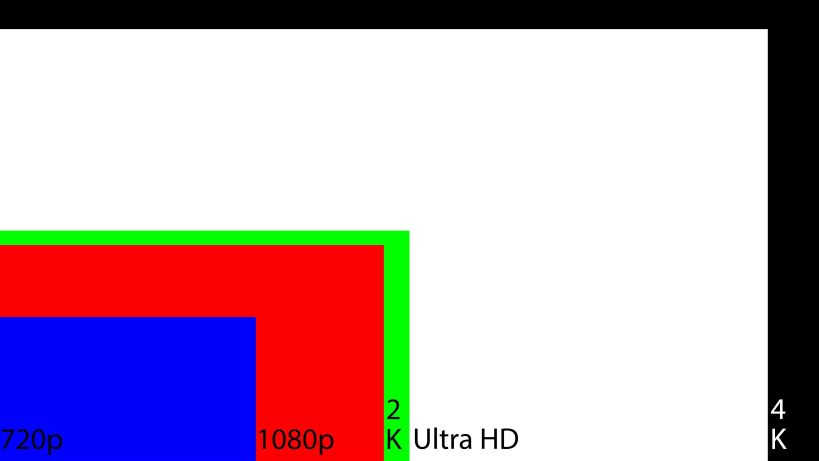By Gary Elinoff, contributing writer
There are big changes afoot in the TV business. The device presently holding court as the centerpiece of your living room is most likely an HD device, with a screen resolution of 1,920 pixels horizontally by 1,080 pixels vertically. Now introducing, online or at a retailer near you: the new 4K and Ultra HD televisions.
What’s the difference?
Plenty, at least spec-wise. Ultra HD TVs feature a resolution 3,840 x 2,160, and 4K TVs have even a bit more resolution at 4,096 x 2,160. Of course, as is with almost anything new in electronics, there is a spec war going on, so your results may vary. In any case, your old-fashioned high-definition (HD) TV, at a resolution of 1,920 x 1,080, yields about 2 million pixels, and 4,096 times 2,160 is about 9 million, so that’s a very big change.
In the diagram below, the black, white, and red areas represent the resolution of 4K, Ultra HD, and HD, respectively.

Screen Resolutions. Image source: CNET.
But will you notice the difference?
You probably won’t, unless you come from the planet Krypton and have super vision. If you sit at a normal viewing distance from your screen, the human eye itself just doesn’t have that much resolution. It almost brings to mind the gold-plated connectors touted by manufacturers back in the waning days of analog sound, with the claim that connectors made of baser metal distorted the analog signal, thereby degrading the sound.
But maybe that’s being a bit too harsh because this added resolution does have some very real uses — just not for TVs. Technology has also made these advances in resolution available for smartphones and tablets. When you use these devices, your eyes are much closer to the screen. Despite the smaller size, viewers can see the differences. And in theatres with huge screens, the difference will be significant.
High dynamic range — something impressive
These new high-pixel-count standards are bringing along another new improvement that definitely has the potential to greatly enrich your viewing experience. High Dynamic Range (HDR) can support over a billion separate colors, as opposed to the “mere” 16 million possibilities inherent in present-day screens. And that’s not all: HDR can also support a far greater range of light-to-dark.
Caveats
As mentioned before, there is a standards war going on. In addition, while many streaming standards do support 4K, there is relatively little content presented by either broadcast TV or cable to exploit it. In the not-too-distant future, all TVs will support 4K and/or Ultra HD. So unless you’re one of those people who just has to have the latest and greatest and you’re not afraid of owning a present-day Betamax, perhaps the smartest thing to do is wait until the war cools down.
Advertisement
Learn more about Electronic Products Magazine





